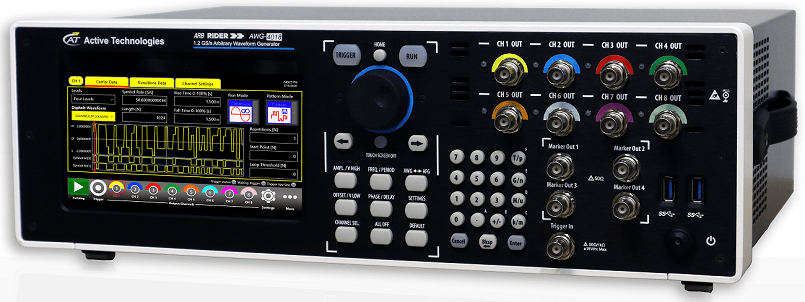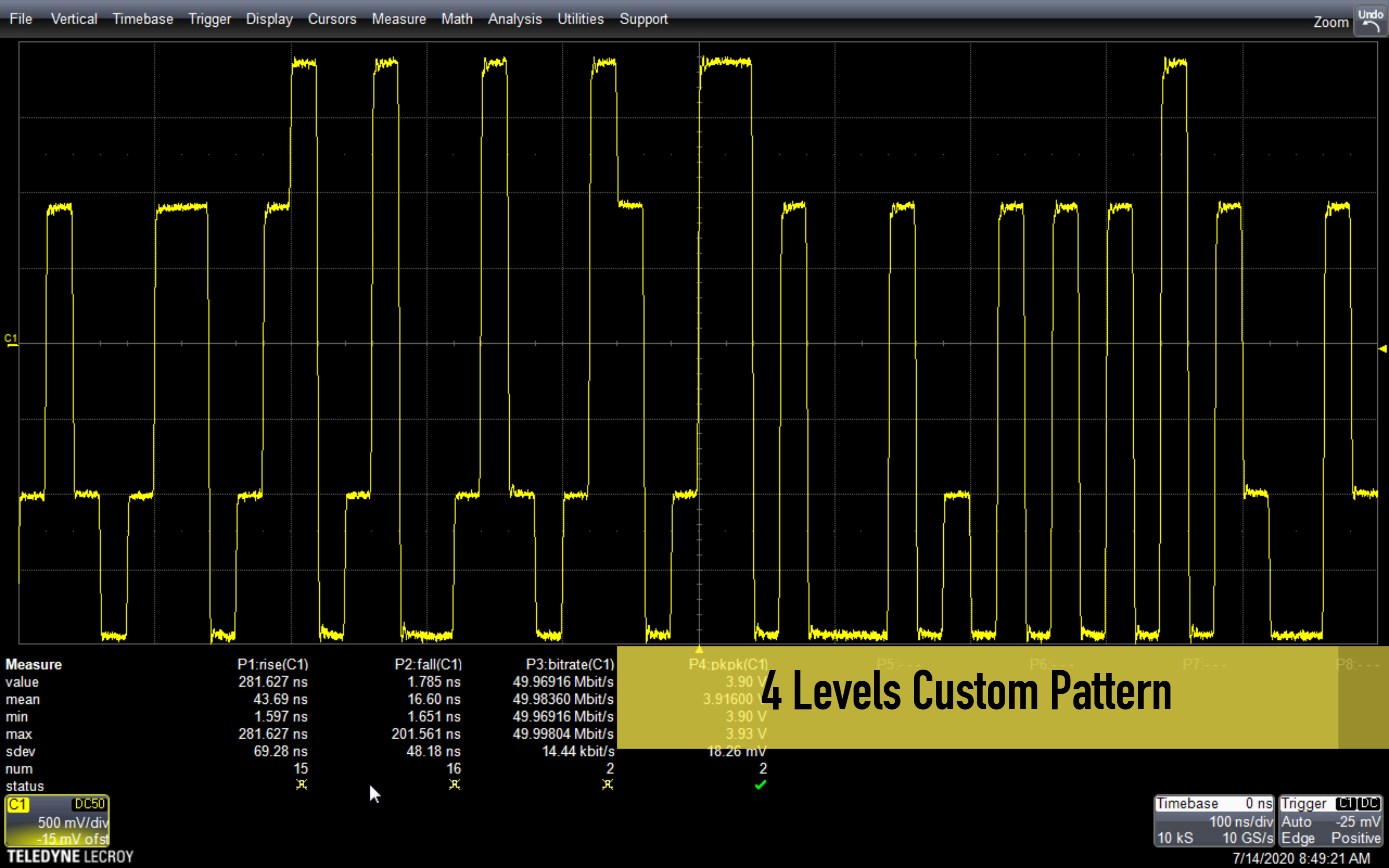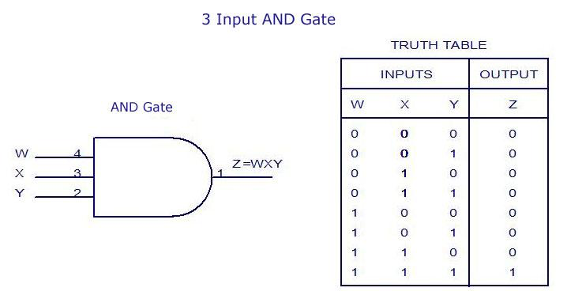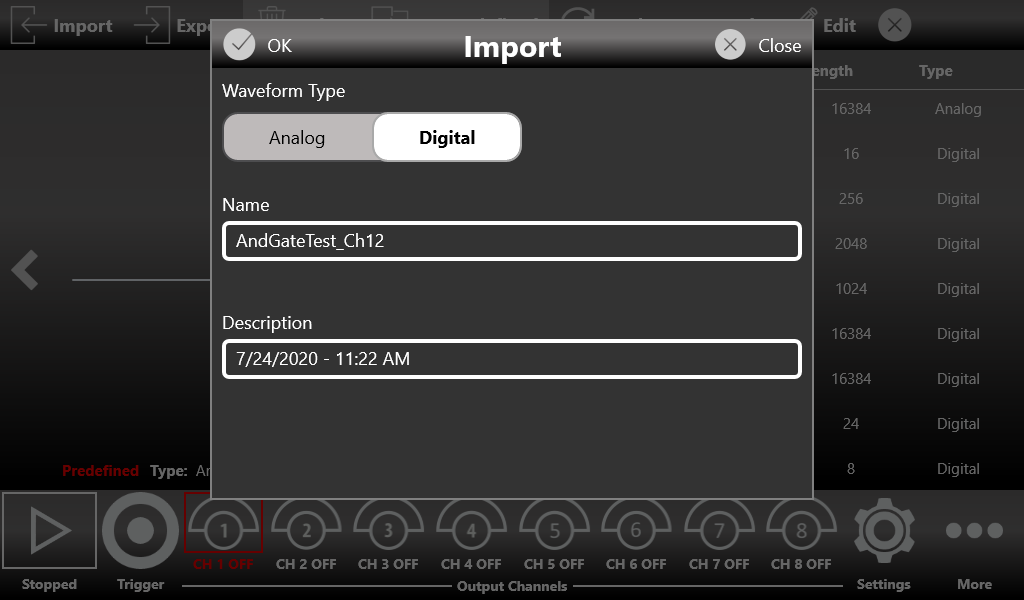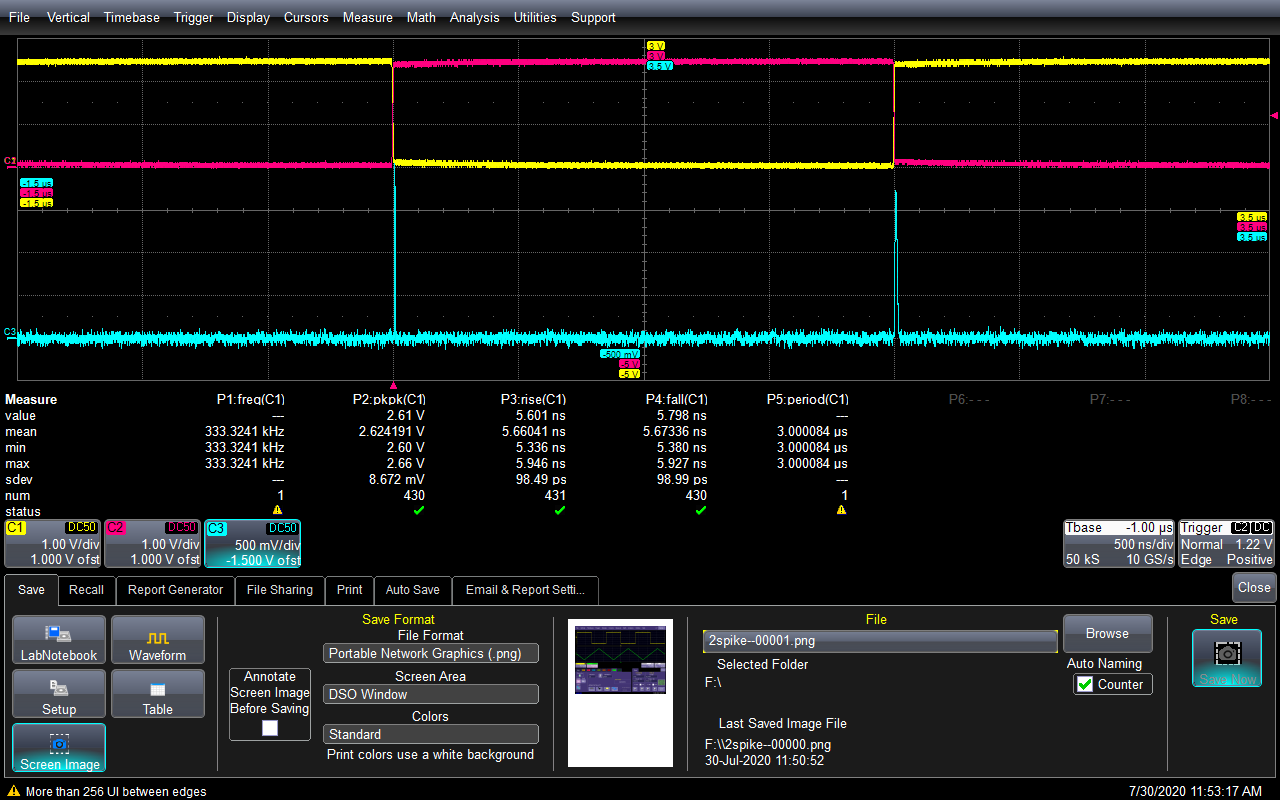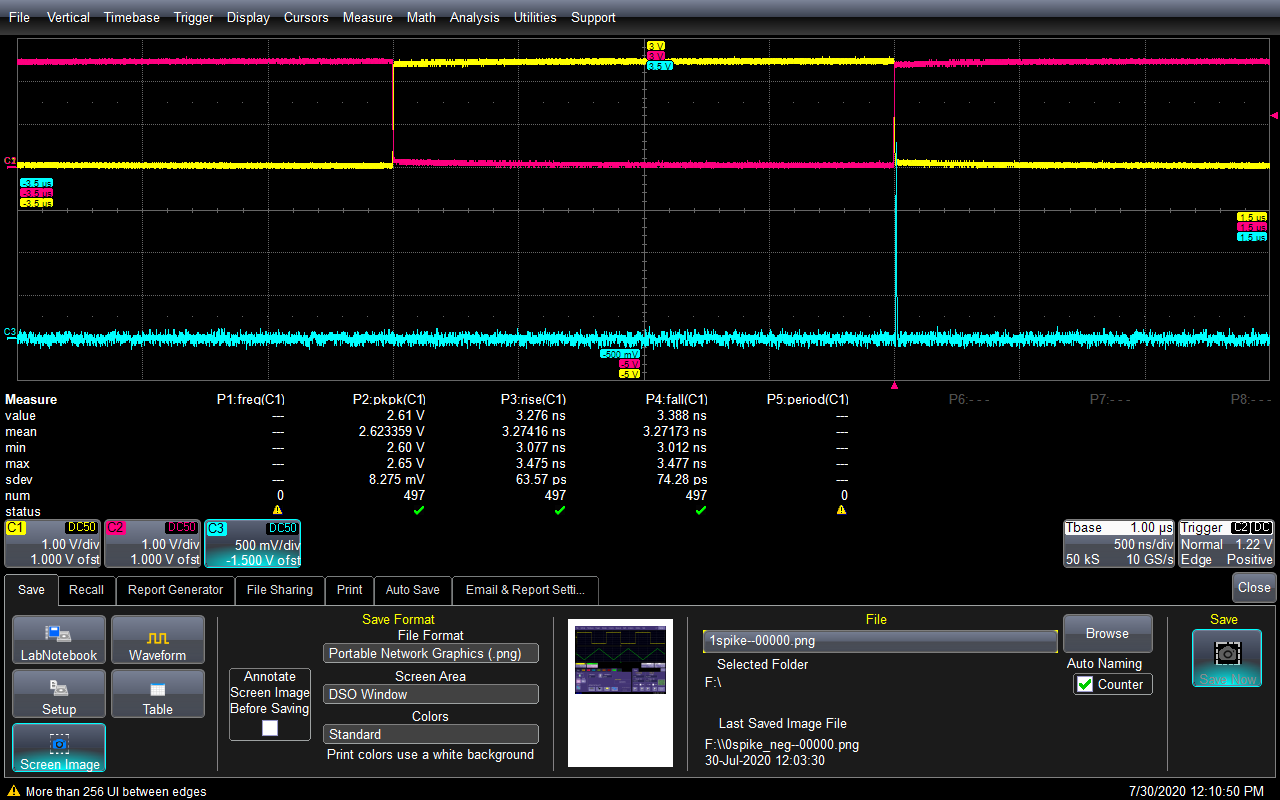Logic gate parametric test with AT-AWG-4000 Pulse Pattern Generator
AWG-4000 Series Application Note – Pulse Pattern Generator
Introduction
This application note describes how to perform a Logic Gate parametric test with the AT-AWG-4000 Pulse Pattern Generator.
The Pulse Pattern Generator feature allows you to generate the signals for the test and the characterization of standard logic gates and all generic digital systems.
The AT-AWG-4000 Series Pulse Pattern Generator simplifies the multilevel pulse generation thanks to its features that combine the pulse and edge shaping with the ability to reproduce a multilevel programmed pattern.
Considering the amplitude of 12 Vpp into 50 Ohm (24 Vpp into open) joined to an analog shift of ±6 V into 50 Ohm (±12 V into open) and the maximum symbol rate of 300 Mega-Symbols per second, this instrument finds application also as a replacement of discontinued products like the Agilent 81110A series.
Logic Gate parametric test set Key Features
Up to 4 logic levels
For each channel it is possible to define up to 4 independent voltage levels to emulate, in addition to logic ‘0’ and ‘1’, a tristate buffer or a weak ‘0’ signal when a bus is not driven.

Edge Definition
The shape of each transition between the levels can be arbitrarly defined by the user. You can use this feature to shape the edge as RC transient or to add a positive overshoot. The 14 bit DAC resolution and the 318 MHz analog bandwidth provides you an excellent signal fidelity.
Amplitude
The AT-AWG-4018 Serial Data Pattern Generator can reach up to 12 Vpp amplitude into 50 Ohm (24 Vpp into open); furthmore it is available a programmable hardware offset (called baseline offset) that allows shifting the voltage window of ±6 V into 50 Ohm (±12 V into open).
In this way by using the baseline offset, the instrument can generate a 0 – 12 V signal into 50 Ohm (0 – 24 V into open).
Multi-Instrument synchronization up to 32 channels
Each unit has 8 independent analog channels and it is possible to synchronize up to 4 units to build a 32-channels system.
Fine time resolution
Thanks to advanced signal processing, the skew between the channels can be controlled with a resolution in the order of 1 ps.
Generation Modes
- Continuous: the generation starts when the user presses the Start button and it ends when the user presses the stop button.
- Burst: the instrument waits for a trigger and then the pattern is generated for the selected number of times. At the end of the burst the instrument waits for a new trigger.
- Modulation: the instrument applies a AM, FM, PM, FSK or PSK modulation to the generated pattern.
- Selectable Header
The memory depth allows a pattern length up to 2 Mbits, but it is possible to select an initial part of the total pattern that is generated once while the rest of the pattern is repeated more times.
Intuitive User Interface
The user interface allows you to easily program the instrument, using the touch screen and the physical keyboard. If you need to integrate the instrument into an automatic testbench, the AT-AWG-4010 Series Data Pattern Generator can be controlled by an external controller via SCPI command.
Standard Logic Gates
Standard logic gates are the basic logic blocks that compose all the digital circuits.
Although nowadays the development of digital applications is realized through programmable IC such as MCU (MicroController Unit) or PGA (Programmable Gate Array), the discrete gates still find applications when the designers need a function that can’t be realized directly in the programmable IC or if the application is not enough complex to include a programmable IC on the board.
In some cases, it is necessary to add external logic gates to reach a bit rate that a programmable device can not support or to insert a level shifter to allow the communication between IC with different voltage standards or to insert a multiplexer to increase the number of pins of a MCU.
There are many types of devices from different logic families (TTL, CMOS, BiCMOS, etc.) with the same logical function.
To characterize and test them, from the simplest ones such as the single gates (NOT, NAND, NOR, and so on) to the more complex ones such as multichannel latches and counters, it is necessary to generate signals with specific characteristics in term of edge shaping, overshoot, amplitude, etc.
Indeed it is necessary to remember that the digital signals are not ideal, but since we are in the real world, they take a bit of time to switch and can be affected by overshoot, so the right test signal is an analog signal that allows you to test a specific feature.
For all those applications, the AT-AWG-4010 Series Serial Data Pattern Generator is the perfect solution, because you can combine the digital pattern with the analog characteristics like edge shaping, amplitude, noise, modulation of the analog front end.
In the following section we will illustrate how to generate the signals needed for the digital tests with the Serial Data Pattern Generator, as example we report a typical application.
Measurement of the Propagation Delay of Asynchronous Logic Gate
For this application we will consider a 3 input AND gate, but the topic remains valid for every logic network. It is known that the 3 inputs of the AND gate are logically equivalent, but the analog characteristics such as the propagation delay depends on the internal architecture.
Using the AT-AWG-4000 Series Serial Data Pattern Genersator, you are able to define analog characteristics of the signals on each input of the gate under test, setting the voltage level and the edge shaping independently among the channels.
In the pictures below you can see the connections for this test:
- The channel 1, 2, 3 of the pattern generator are connected to the input of the AND gate.
- The channel 4 is connected to oscilloscope as reference.
- The Output of the AND gate is connected to the oscilloscope.
For simplicity the power supply, the ground and other components needed for the proper operation of the AND gate has been omitted.
Now let’s look at how to configure the Pattern Generator using the software interface.
- From Carrier Data tab, set the level number to 2, define the bit rate and select Custom as Pattern Mode.
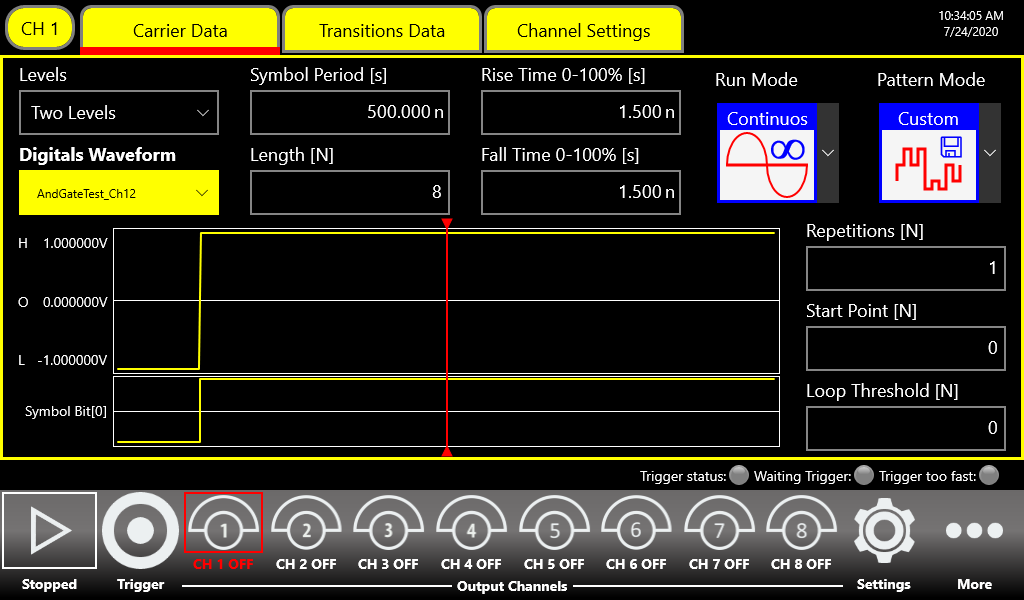
- From the “Transition Data” tab, define the shape of the edges; in this case we set as linear defining a rise/fall time of about 4 ns. Define the levels by setting the voltage levels of each transition.
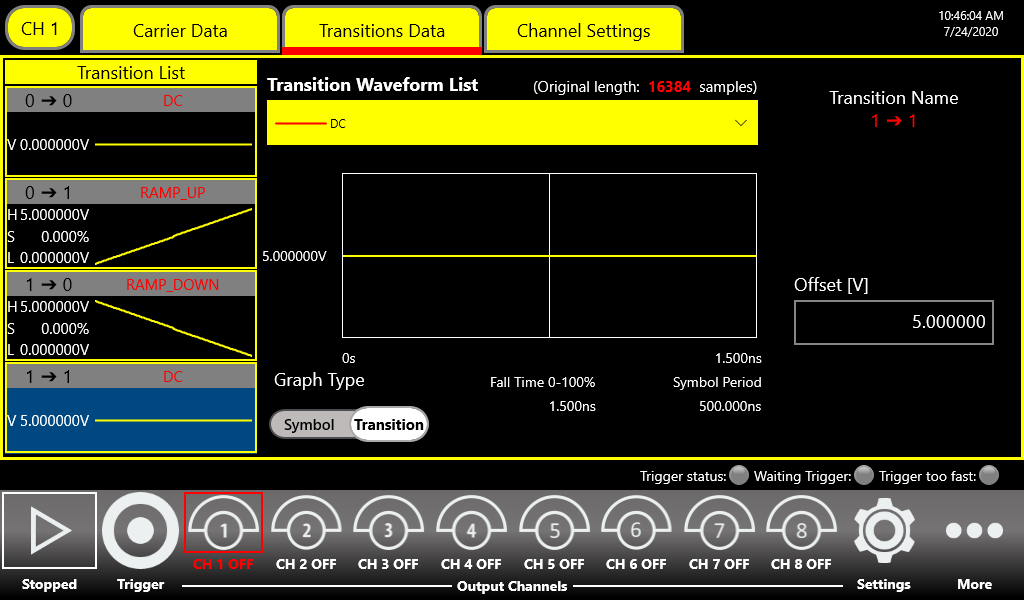
- Definition of the pattern:
Ch 1: 01111111
Ch 2: 01111111
Ch 3: 00011110
Ch 4: 00011110
Ch 5 – 8: not usedSince we want to evaluate the propagation delay of the input 3, the input 1 and 2 go to high level at the same time and when they are stable, the input 3 executes the rising edge, stays at high level for 4 symbols and then executes a falling edge. The channel 4 behavior is the same of the channel 3 and it is used as reference for the oscilloscope.
- Press the Run button and observe the results.
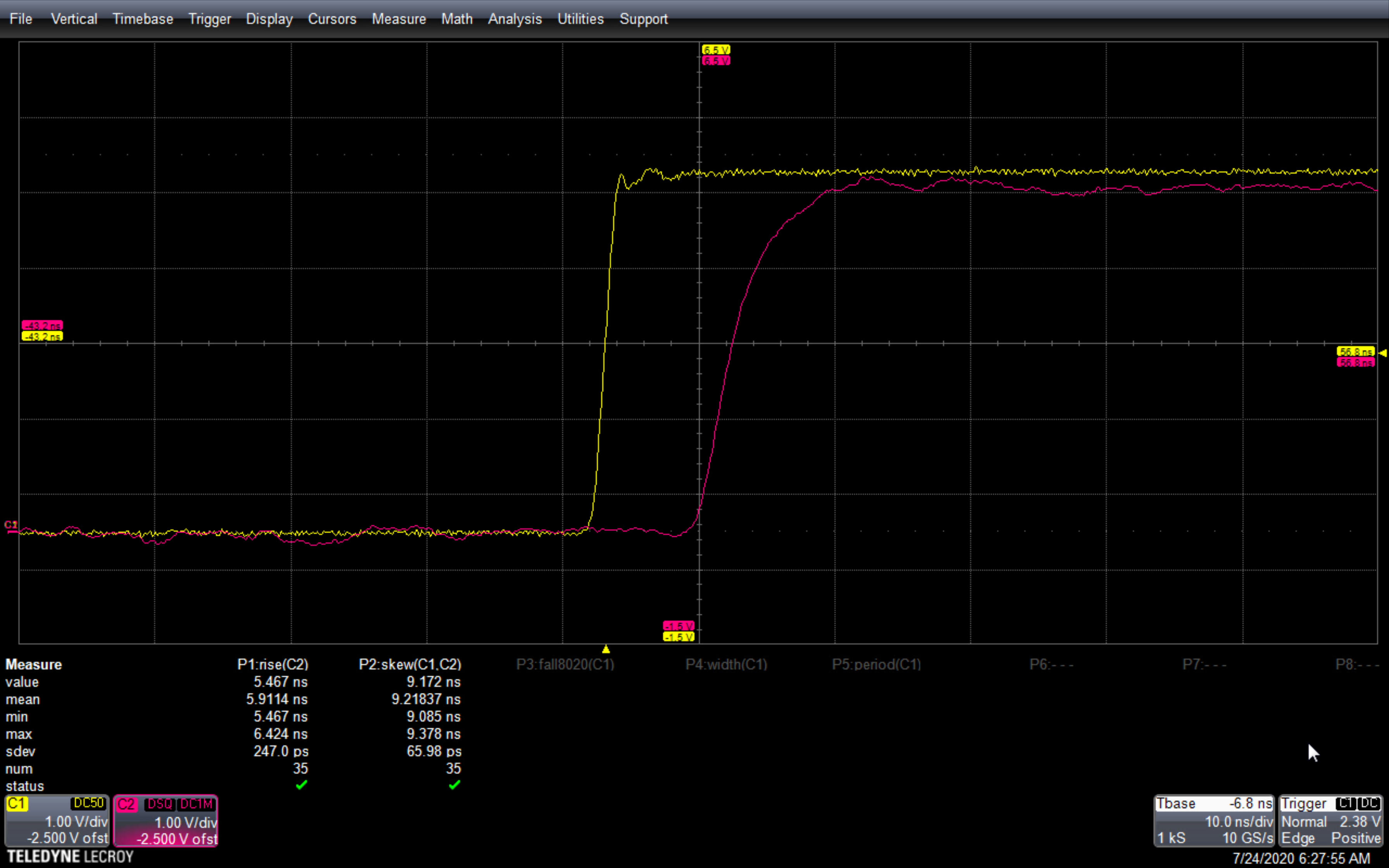
In the oscilloscope screenshot above, we can observe delay between the output of the logic gate
and the channel 4 of the SPG.Note: to compensate the delay of the cables you can adjust the initial delay of the channel 4.
This setup is useful to characterize the input-to-output propagation delay for the input 3, but by changing the pattern you can observe also the behavior of other inputs.
Effects of Simultaneous Switches in Asynchronous Logic Gate
Working with asynchronous logics, it can be interesting to investigate the behavior of the logic gate at the simultaneous switch of two or more inputs. So starting from the previous set-up, we want to test what it happens if the input 1 goes at high level while the input 2 goes at low level.
Now we load the following pattern:
Ch 1: 11000011
Ch 2: 00111100
Ch 3: 11111111
Ch 4 – 8: not used
Logically the output should be always ‘0’, but depending on the edges of the input signal and on the internal architecture of the logic gate under test, it is possible to see a spike on the output. In the pictures below you can see that, although the output should be always 0, there are 2 spikes at the input switches.
To summarize, below we report the oscilloscope screenshot about other tests, obtained by varying the rise/fall time and the skew between the channels.
- Skew channel 1 – 2: 2 ns
Rise / Fall time: 4 ns
As you can see in the picture above, adding a skew on the output appear a spike when the input 1 switches to high level.
- Skew channel 1 – 2: 0
- Ch 1 Rise time 7 ns
- Ch 1 Fall time 4 ns
- Ch 2 Rise time 7 ns
- Ch 2 Fall time 4 ns
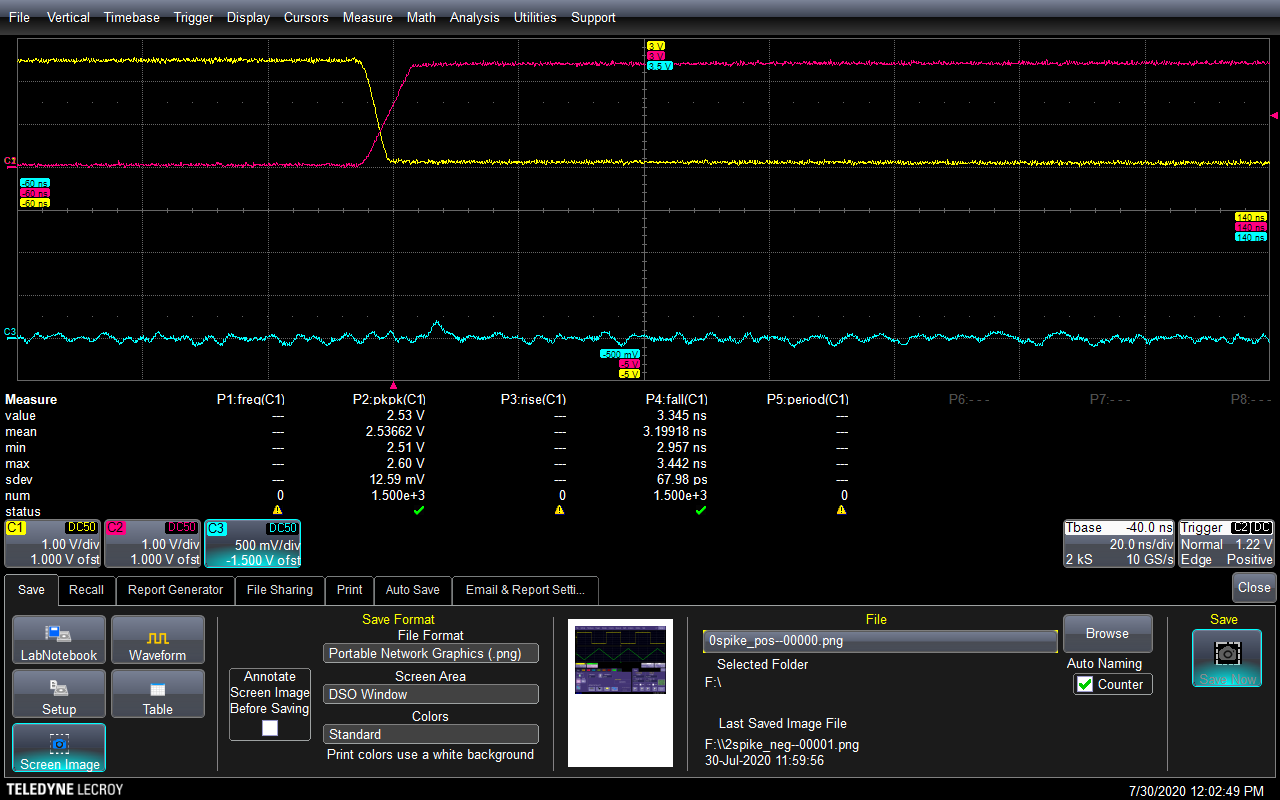 As you can see in the picture above, with those settings there is not any spike.
As you can see in the picture above, with those settings there is not any spike. Conclusion
The AT-AWG-4000 Series Data Pattern Generator offers you a set of tools to address the most complex applications on digital devices characterization.
Multiple outputs, high voltage window, custom and modulated pattern generation are unique features that can help designers to test with confidence their devices under test; the ease to use user interface allows you to simplify and speed up the setup of your most complex systems.
